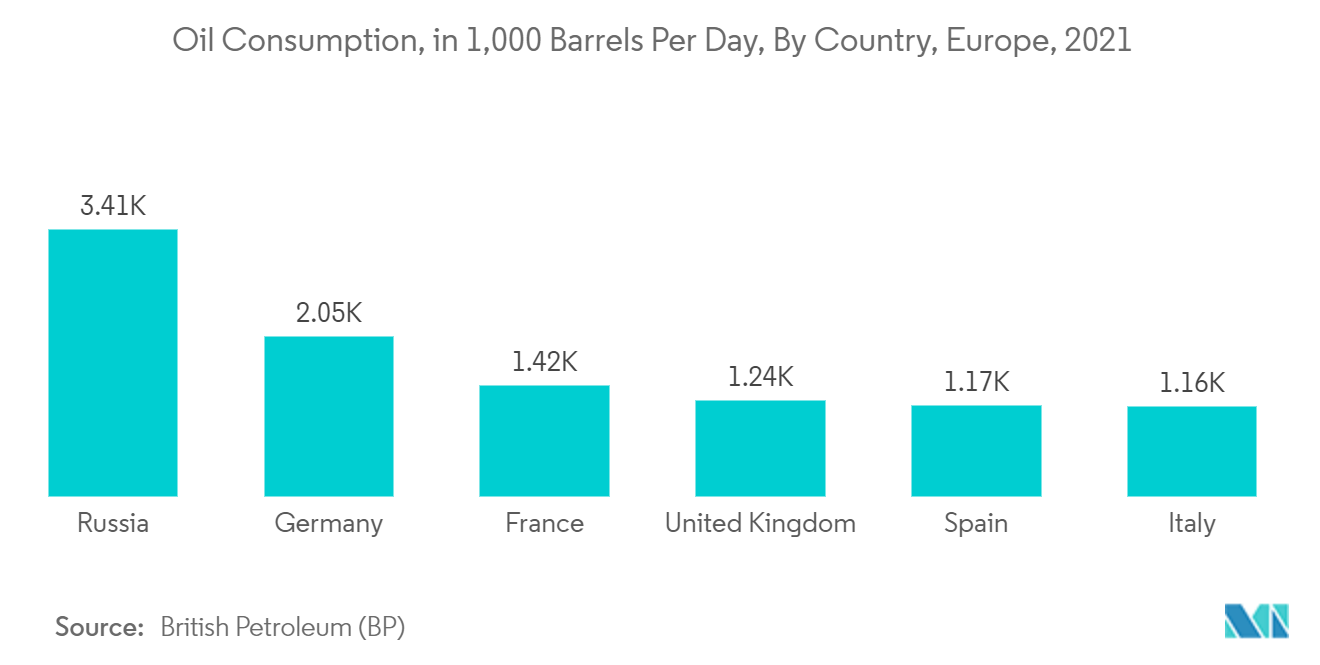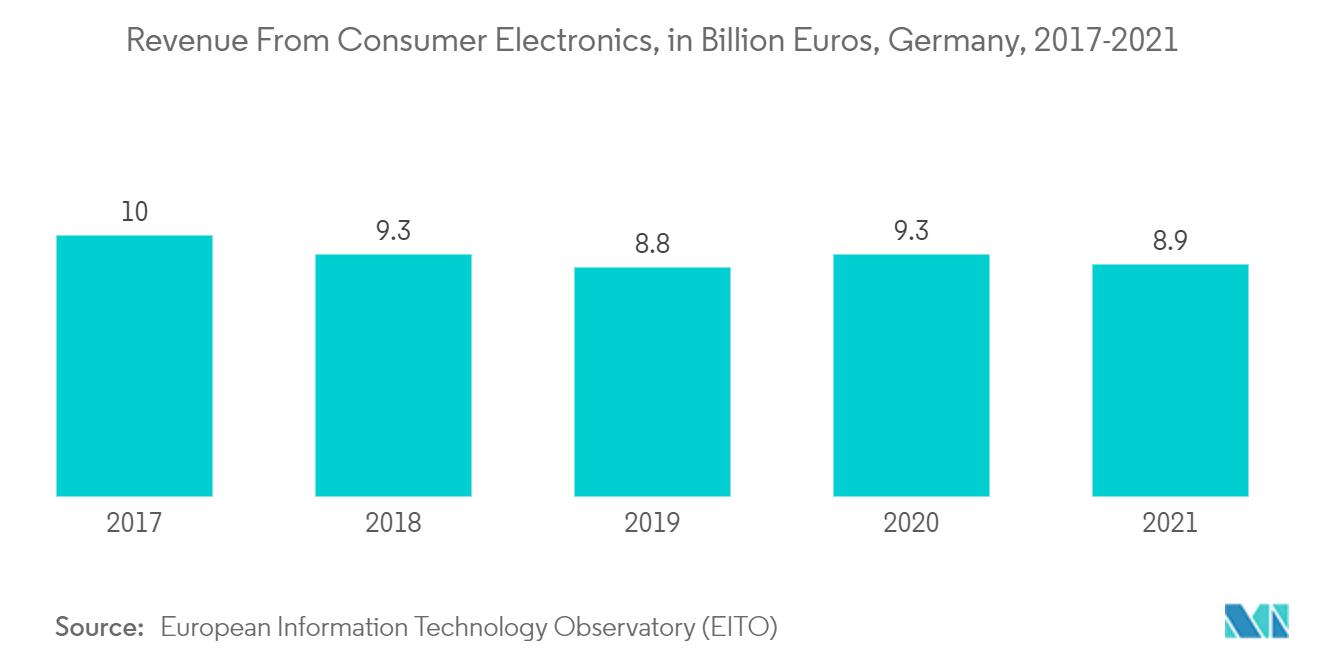Market Trends of Europe Silicone Industry
This section covers the major market trends shaping the Europe Silicone Market according to our research experts:
Increasing Application in Industrial Processes
- The main applications of silicones in the industrial processes sector are anti-foaming agents, industrial coatings, hydraulic fluids and lubricants, RTV (Room-Temperature-Vulcanizing) sealants, molds, and polymer additives.
- Silicones are frequently utilized in the oil and gas industry, particularly in offshore drilling, where managing foam and waste is critical due to space and weight constraints. Silicones allow gas trapped in drilling mud to escape. Anti-foaming agents utilize less energy and chemicals while raising production rates because the foam's presence slows the process and necessitates time for maintenance activities.
- Silicone is also widely utilized in industrial coatings such as anti-corrosion, chemical-resistant, and heat-resistant coatings used on bridges and tunnels. Coatings on structures utilized in the oil and gas (including refineries), power, and other industries are also included.
- As a result, the expansion of the European oil and gas industry is expected to boost the demand for silicone. For example, crude oil accounted for 62% of European imports of energy products in 2021, followed by natural gas in gaseous form (25%). Tweet Russia continued to be European's leading supplier of natural gas and petroleum products in 2021.
- According to British Petroleum (BP) statistics, Russia is the top largest consumer of oil in Europe, totaling 3.4 million barrels per day in 2021. Germany stood second with oil consumption of 2.04 million barrels per day in 2021.
- Russia is a significant economy in the European region in the oil and gas sector. According to the Russian Federation's Ministry of Finance, oil and gas earnings provided around RUB 9.06 trillion (USD 142.51 billion) to Russia's federal budget in 2021, a 73% increase over the previous year.
- Germany also accounted for a substantial share of the oil and gas sector. According to Statistisches Bundesamt, crude oil imports to Germany were worth EUR 33.9 billion (USD 35.56 billion) in 2021, while natural gas imports were worth roughly EUR 39 billion (USD 40.91 billion).
- The number of offshore drilling rigs gradually increased over the years. It, along with new contract awards and an increase in European production activities, led to the demand for offshore exploration equipment, supporting the recent growth of the water treatment chemicals market, including silicone-based anti-foaming agents.
- All the above factors are expected to drive the industrial processes, impacting the silicone demand during the forecast period.

Germany is Anticipated to Hold a Major Share of Europe
- Europe's silicone market is one of the leading, accounting for one-third share. The growing demand in Germany is one of the prominent reasons for the growth of the Europe silicone market over the years.
- Semiconductors form a significant part of the electronics segment, involving silicone usage as silicone encapsulates, coats, and adheres to and protects semiconductors, PCBs, ECUs, and others.
- Germany is the beating center of the European semiconductor sector, ranking among the top semiconductor manufacturing locations in the world. The country includes an unrivaled concentration of world-class device makers and suppliers for materials, components, and equipment across the entire value chain. The government invested up to EUR 50 billion (USD 52.45 billion) to secure Germany's position as a central semiconductor manufacturing location in 2021, thereby increasing the demand for the studied market.
- Germany is a maritime country with a coastline of nearly 12,000 km and several big ports. Several big companies dominate the country's shipbuilding industry, including the Meyer Shipyard in Papenburg, the Lürssen Shipyard in Bremen, and the Fassmer Shipyard in Berne. GERMAN NAVAL YARDS Holdings is a wholly owned subsidiary of PRIVINVEST and a member of the European shipyard alliance. The group includes, among others, the French naval shipyard Constructions Méchaniques de Normandie (CMN) and Isherwood's, a provider of integrated logistics support and maintenance management systems from the United Kingdom.
- Moreover, Germany is one of the largest consumers of electronics. According to European Information Technology Observatory (EITO), in Germany, the revenue development in the consumer electronics segment in Germany amounted to EUR 8.9 billion (USD 9.33 billion) in 2021, compared to EUR 9.3 billion (USD 9.92 billion) in 2020.
- Furthermore, Germany is an automotive manufacturing hub, registering a significant production share. According to the Central Committee of German Catholics (German: Zentralkomitee der Deutschen Katholiken, ZdK), the German automotive industry generated EUR 57.4 billion (USD 60.21 billion) in revenue from new car sales in 2021.
- Thus, all the above factors will likely provide the increasing demand for the Europe silicone market during the forecast period.


